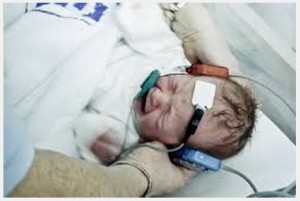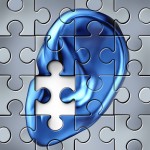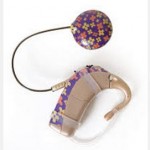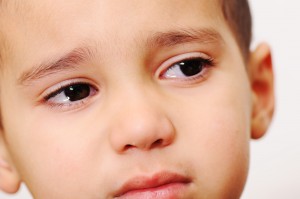Related Products
For Professionals
- Amplification
- Assessment of Student Skills, Challenges, Needs
- Early Childhood: Infants, Toddlers, Preschool
- Hearing Loss – Identification, Impact and Next Steps
- IDEA Law Summary Information
- Language and Speech Development Issues
- Legal Issues in Serving Children with Hearing Loss
- Listening (Auditory Skills) Development
- Planning to Meet Student Needs
- Self-Advocacy Skills for Students with Hearing Loss
- Self-Concept: How the Child with Hearing Loss Sees Himself
- Social Skills
- Speech Perception & Learning
Related Teacher Tools Takeout Items
ANSD – Auditory Neuropathy/Dyssynchrony Spectrum Disorder
Auditory Neuropathy/Auditory Dyssynchrony Spectrum Disorder
– In Brief
What is ANSD?Up to 15% of children with permanent hearing loss (HL) have auditory neuropathy spectrum disorder. ANSD is present when children have normal outer hair cell function in the cochlea, but the VIIIth nerve that carries electrical signals to the brain has responses that are dyssynchronous. This means that instead of a smooth transition of information from the cochlea to the brain, the signals are not synchronized so information is not relayed to the brain in a consistent manner. The amount of dyssynchrony varies from person to person.
An Analogy

You are driving between two cities a considerable distance apart. You have a talk radio station playing on the car radio. As you leave the range of the radio station behind the signal develops static. You can still hear the speech, but it is much harder to understand. Turning up the radio volume does little to improve your understanding of the speech presented on the talk radio station. For children with ANSD, the amount of dyssynchrony, or ‘static’ interferes with understanding especially if there is ANY background noise present.
The diagnosis of ANSD does not provide a lot of information about how the child will be able to use auditory input in the future. The parent will be a key contributor in helping to answer those questions by observing their child’s responses to sound in their everyday listening environments. A family can certainly use sign language as a mode of communication with any child with hearing loss or ANSD. It is worth acknowledging that many children with ANSD have sufficient auditory skills to develop spoken language with either hearing aids or cochlear implants if that is the family’s preference. Hearing assistance technology, including
remote-microphone systems (FM/DM), are essential for promoting auditory access in noise, as with children who have sensorineural losses.
How is ANSD diagnosed?

Most hospitals screen hearing of newborns using OAE equipment. The otoacoustic emissions (OAE) tests for a response to sound by the outer hair cells of the cochlea but does not test how the brain responds to sound. Therefore, a typical newborn hearing screening program may not identify a child with ANSD because the outer hair cells can function normally. There are some children that will have some abnormal cochlear function causing reduced OAE responses in addition to ANSD that can be identified during newborn hearing screening.
Children with auditory neuropathy/dyssynchrony spectrum disorder exhibit no auditory brain stem response (ABR), no middle ear muscle response, and both normal otoacoustic emissions or normal cochlear microphonics. An absent or grossly abnormal ABR is not always associated with deafness. In contrast, a hearing loss of 30 dB or more usually predicts absent otoacoustic emissions, but normal emissions can be seen in some patients whose behavioral audiograms imply total deafness.
To summarize, in a diagnosis of ANSD a normal OAE will be present but ABR will be abnormal.
Are there risk factors or case history information that can help in identifying children who potentially have ANSD?

Yes, but many children who have ANSD do not have any risk factors.
Research has indicated that the following risk factors are associated with ANSD: (1) hyperbilirubinemia ranging from just above normal to quite high, including infants that have gone through exchange transfusions, (2) prematurity (25 – 36 weeks gestational age), and (3) perinatal asphyxia. ANSD can also run in families, following both recessive and dominant inheritance patterns. ANSD can be suspected when a child has residual hearing and has been fit with good high-quality hearing aids and still does not progress in speech and language development, despite consistent amplification wear and parents who are involved communicators.
How can children with ANSD vary in their ability to use hearing?
If you’ve seen one child with ANSD, you’ve seen one child with ANSD. The variation in auditory behavior and functionality is very wide. Most people who have ANSD have both ears affected however there are some that have unilateral auditory dyssynchrony. Hearing thresholds vary from near normal hearing to profound hearing loss. Children with ANSD are known to have speech perception than is poorer than seen in children with comparable degrees of sensorineural hearing loss. The auditory abilities of these children are often unpredictable. Some people are able to recognize speech when it is quiet –
all individuals with ANSD have difficulty if any background noise is present. Some children have hearing thresholds that are indistinguishable from children who are deaf or hard of hearing. Children with ANSD who have severe to profound hearing loss have been successfully implanted and can perform well with cochlear implants.

Some children with ANSD do not successfully progress in speech and language development despite consistent amplification wear and good intervention. Learning language through visual means (i.e., sign language, cued speech) is necessary. Some of these children have been successful cochlear implant users and have moved away from visual language systems post-implantation. Some children actually show a worsening of dyssynchrony symptoms over time whereas others seem to recover their awareness of sound, but continue to have difficulty in noise and delayed language development.
Although hearing aids have been found to assist some individuals with ANSD in quiet, it is apparent that even if a little background noise is present that they have great difficulty understanding.
Research (2010) reflecting the outcomes of 260 children with ANSD indicated that 85 children tried hearing aids and 49 tried cochlear implants. Approximately 15% reported some benefit from hearing aids for language learning. Improvement in speech comprehension and language acquisition was reported for 85% of cochlear implant users with approximately 5% (13 of 260) developing normal speech and language without intervention. In a group of 100 children with ANSD that have been followed through the Louisiana State University Health Sciences Center in New Orleans, there has been no observed facilitation of speech and language development with hearing aids alone.
More recent
research (2015) on 12 children with ANSD compared with 22 children with sensorineural hearing loss (SNHL) found no significant differences between the ANSD and SNHL groups on language and articulation measures. Children with ANSD displayed functional speech perception skills in quiet. Although the number of participants was too small to conduct statistical analyses for speech perception testing, there appeared to be a trend in which the ANSD group performed more poorly in background noise with HAs, compared to the SNHL group. For children with ANSD in the mild-to severe HL range, these research results support the recommendation to try hearing aids, as children with ANSD can achieve functional outcomes similar to peers with SNHL. If children fail to progress in auditory and communication development with loaner hearing aids, they can be referred to cochlear implant team for candidacy evaluation, including examination of the auditory nerve to identify potential cochlear nerve deficiency. Children who are not cochlear implant candidates due to cochlear nerve deficiency or other factors may be candidates for the auditory brainstem implant trial or visual communication. Cochlear nerve deficiency occurs in around 20% of children with ANSD.
NOTE: Some children with ANSD complain of over-sensitivity to sound (ringing, static) and discomfort with aided hearing. These symptoms may be made worse (perceptually, emotionally) by the use of amplification. Providing optional hearing aid programs and working on densensitization methods typical of children with
hyperacousis may be warranted.
How can cochlear implants benefit people with ANSD?
Researchers believe that it is possible that electrical stimulation, like that from a cochlear implant, can help to synchronize activity in the impaired portions of the brain and allow interpretation of auditory information. Even for children who receive implants, it is important to allow them to gradually move from a visual language system to an auditory language. Abrupt removal of the communication system that a child has depended upon prior to receiving a cochlear implant is not recommended and could interrupt smooth continuation of the language development progress.

Research has found that cochlear implantation is a viable treatment option for children with a diagnosis of ANSD who are not making auditory progress with appropriately fit hearing aids. Expected outcomes of cochlear implantation for children with ANSD, excluding children with cochlear nerve deficiency, are no different than for children with non-ANSD sensorineural hearing loss. These results are important for counseling families on the expected outcomes and realistic expectations following cochlear implantation for children with ANSD who demonstrate no evidence of cochlear nerve deficiency.
Are there any communication methods that facilitate development of speech and language in children with ANSD?

Learning speech and language through the auditory channel exclusively is very difficult for children with ANSD. This is because it is difficult or impossible to achieve a clear and consistent auditory signal (unless the person has a cochlear implant) in a dyssynchronous auditory system.
Research has indicated that use of a
visual communication system, such as English-based sign systems or
cued speech are recommended methods to develop language through visual communication assuming that the parents desire the child to eventually use spoken language.
ASL is appropriate in addition to the other visual communication means as a viable option for developing language if spoken language is not a goal. Auditory Verbal therapy by itself, before cochlear implantation, has not been observed to work as the sole method of teaching language to ANSD children.
Refer to Developing a Treatment Program for Children with Auditory Neuropathy by Arlene Stredler-Brown
http://www.arlenestredlerbrown.org/docs/Auditory_Neuropathy.pdf for information on intervention.

Information was excerpted by Karen Anderson from : Hood, L. J. (2002). Auditory neuropathy/auditory dys-synchrony: New insights.
The Hearing Journal (March).
RESOURCES
A
Tutorial on Auditory Neuropathy/Dyssynchrony for the Speech-Language Pathologist and Audiologist by Uhler, Heringer, Thompson, Yoshinaga-Itano, 2012
Listserve for parents of children with AN: auditoryneuropathy@yahoogroups.com
Posted to Supporting Success for Children with Hearing Loss Jan 2015. Updated Jan 2016.
